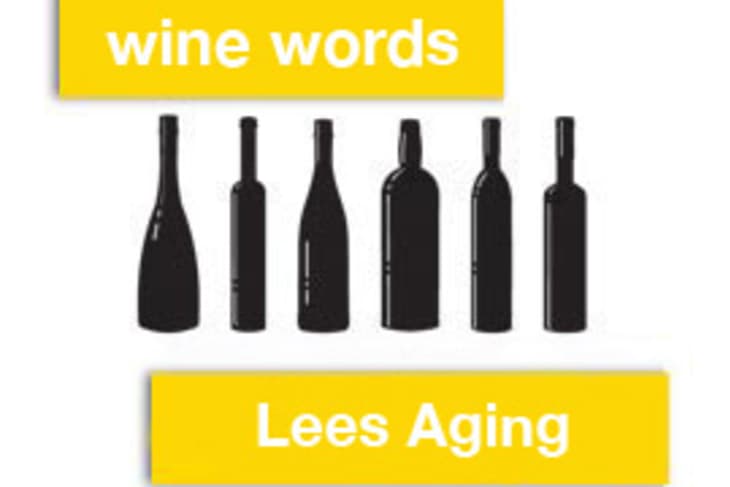Wine Words: Lees Aging
Lees aging is a wine word used to describe a stage in a wine’s maturation phase. Do you know what it means? Lees are the dead yeast cells and other particles remaining in a wine after fermentation. They settle as sediment or creamy mud at the bottom of the fermenting container.
The container could be a tank, a wooden barrel or even a bottle, as in the case of Champagne and bottle fermented sparkling wines.
Red wines are usually racked off their lees earlier than white wines (though not always). It is a common practice to deliberately leave many white wines in contact with the lees for an extended period of time after fermentation. This is called lees aging.
As these dead yeast cell (lees) break down, they release all sorts of compounds such as mannoproteins, amino acids, polysaccharides and fatty acids, which interact with the fermented wine. This interaction with the wine creates complexity, aroma and flavor compounds, palate weight and texture in a wine. While the main reasons for deliberate lees aging tend to be stylistic in nature, lees absorb oxygen, thereby reducing the risk of any unwanted oxidation of the wine and helps maintain overall wine stability.
While the lees are in contact with the wine they are often stirred, a practice known as bâtonnage to augment the influence of the lees on the wine.
Lees aging is common practice for White Burgundy and other Chardonnay wines. Muscadet Sur Lie from the Loire is a wine whose style is determined by a minimum regulated time on the lees. Today, many other white wines, even aromatic wines such as Sauvignon Blanc, spend between three to six months on the lees to enhance the structure, mouthfeel and complexity of the wine.
Autolysis is a specific type of extended lees aging that we associate with Champagne and bottle fermented sparkling wines. After about 14 months on the lees, these wines develop toasty, biscuity and bready aromas that we call autolytic aromas. This I will develop in a separate Wine Word post.
Mary Gorman-McAdams, MW (Master of Wine), is a New York based wine educator, freelance writer and consultant.
Previous Wine Words
• Wine Words: Clarity
•
Wine Words: Color
• Wine Words: Complexity
•
•
Wine Words: Aromas
•
Wine Words: Alcohol
•
•
•
•
•
•
Wine Words: Sweetness
• Wine Words: Style
• Wine Words: Oak
• Wine Words: Clarity
• Wine Words: Extraction
•
•
• Wine Words: Reserva, Riserva, Reserve
• Wine Words: Quality
•
Wine Words: Vintage
•
•
Wine Words: Bordeaux Blend
•
•
• Wine Words: Champagne
•
•
• Wine Words: Malolactic Fermentation
• Wine Words: Cold Soak
• Wine Words: Fortified
• Wine Words: Contains Sulfites
(Image: Underlying image by Sadovnikova Olga/Shutterstock)
